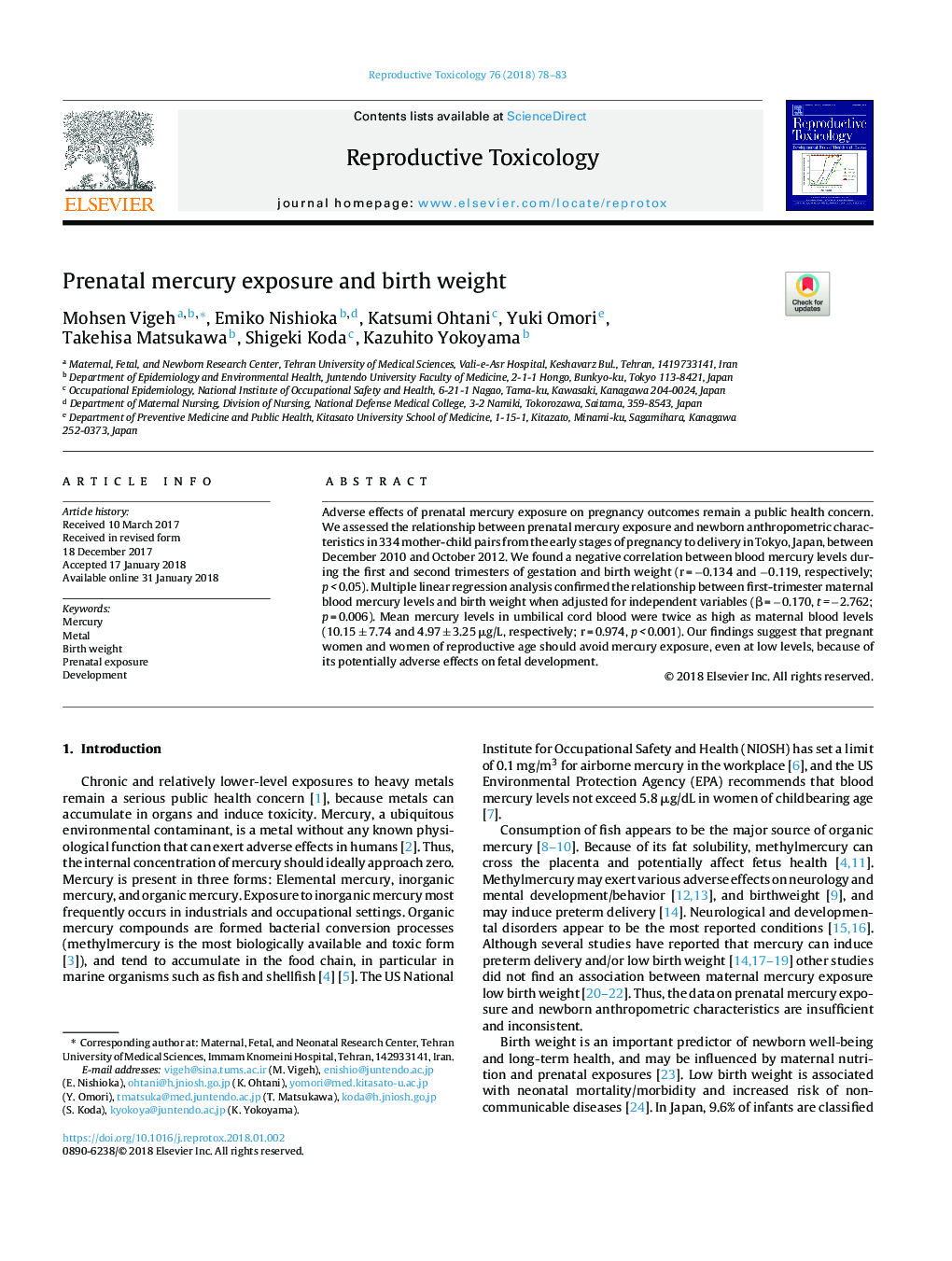| Article ID | Journal | Published Year | Pages | File Type |
|---|---|---|---|---|
| 8552405 | Reproductive Toxicology | 2018 | 6 Pages |
Abstract
Adverse effects of prenatal mercury exposure on pregnancy outcomes remain a public health concern. We assessed the relationship between prenatal mercury exposure and newborn anthropometric characteristics in 334 mother-child pairs from the early stages of pregnancy to delivery in Tokyo, Japan, between December 2010 and October 2012. We found a negative correlation between blood mercury levels during the first and second trimesters of gestation and birth weight (râ¯=â¯â0.134 and â0.119, respectively; pâ¯<â¯0.05). Multiple linear regression analysis confirmed the relationship between first-trimester maternal blood mercury levels and birth weight when adjusted for independent variables (βâ¯=â¯â0.170, tâ¯=â¯â2.762; pâ¯=â¯0.006). Mean mercury levels in umbilical cord blood were twice as high as maternal blood levels (10.15â¯Â±â¯7.74 and 4.97â¯Â±â¯3.25â¯Î¼g/L, respectively; râ¯=â¯0.974, pâ¯<â¯0.001). Our findings suggest that pregnant women and women of reproductive age should avoid mercury exposure, even at low levels, because of its potentially adverse effects on fetal development.
Related Topics
Life Sciences
Environmental Science
Health, Toxicology and Mutagenesis
Authors
Mohsen Vigeh, Emiko Nishioka, Katsumi Ohtani, Yuki Omori, Takehisa Matsukawa, Shigeki Koda, Kazuhito Yokoyama,
